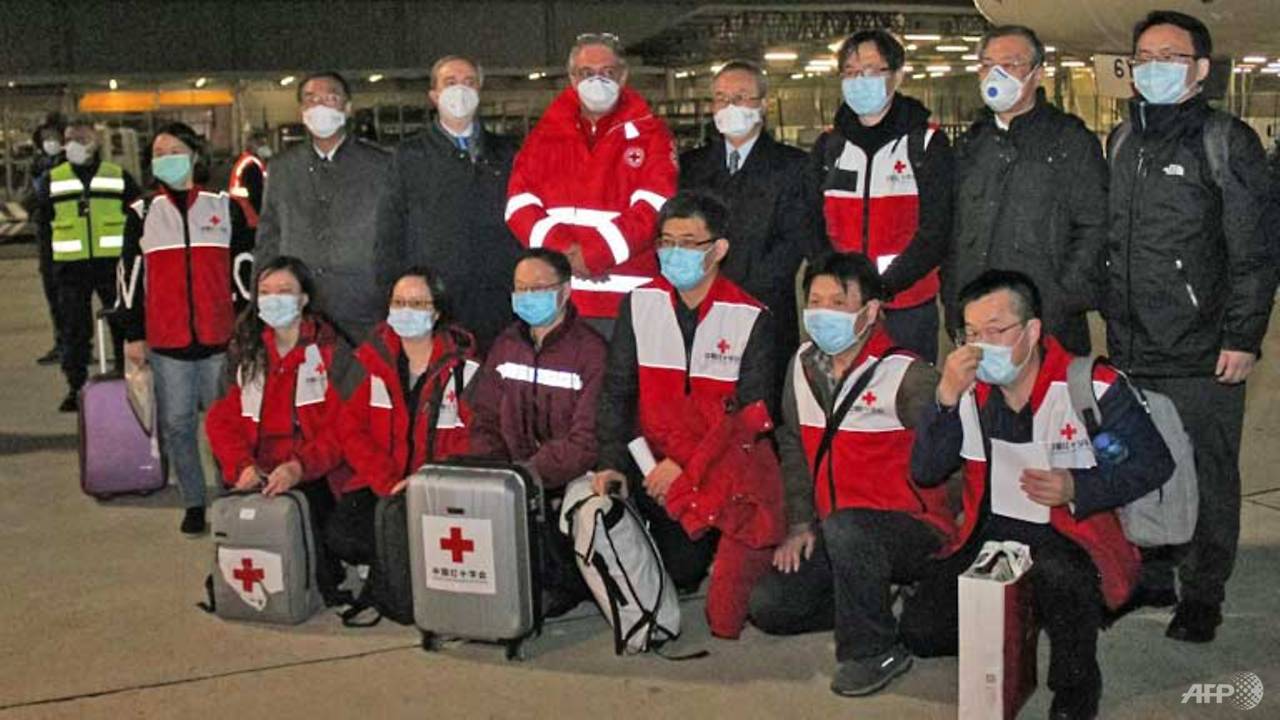
Commentary: What’s behind China’s controversial Health Silk Road efforts
KUALA LUMPUR: Chinas Health Silk Road (HSR) first appeared in a speech given by Chinese President Xi..
KUALA LUMPUR: Chinas Health Silk Road (HSR) first appeared in a speech given by Chinese President Xi Jinping in 2016 in Uzbekistan.
But the concept can be traced back to a document prepared by Chinas health authorities in 2015.
Advertisement
Advertisement
The document laid out a three-year proposal to promote the Belt and Road Initiative (BRI) through cooperation in the healthcare sector.
READ: Commentary: China billionaires a force to be reckoned with in global COVID-19 fight – and more
THE HUMBLE BEGINNINGS OF THE HEALTH SILK ROAD
At the first BRI Forum in 2017, a Beijing Communique of the Belt and Road Health Cooperation and Health Silk Road was signed by China, the World Health Organization (WHO), UNAIDS and 30 countries.
Advertisement
Advertisement
A closer look at the Communique suggests that it shared many similarities with the 2015 document.
According to these documents, the main activities under the HSR include: Organising high-level regional forums for health officials, establishing a Belt and Road Public Health Network for coordinated reactions to public health emergencies, and capacity building and professional training.
The documents also emphasise cooperation — for example in monitoring, control and prevention of infectious diseases — between medical science professions in research and development and in the use of traditional medicine.
Chinese foreign minister Wang Yi has said Beijing is open to international cooperation to identify the source of the novel coronavirus. (Photo: AFP/NICOLAS ASFOURI)
READ: Commentary: China's COVID-19 push for global influence
Other initiatives include medical aid and donations, exchanges between different national healthcare systems, maternal and child health projects, trade and investment in the healthcare industry, and the standardisation of health and drug access.
PROGRESS IN COOPERATION
Before the outbreak of COVID-19, the HSR was quietly progressing in some of these areas of cooperation, albeit unevenly.
Regional forums have taken place in the form of the China–ASEAN Health Cooperation Forum, the China–Central and Eastern European Countries Health Ministers Forum and the China–Arab Health Cooperation Forum.
China also established several regional health cooperation projects with its Central Asian and Greater Mekong Subregion neighbours. Networks such as the Association of Sino-Russian Medical Universities and the China–ASEAN Forum on Hospital Management Cooperation were formed.
READ: Commentary: The new wave of Chinese tech champions you never heard of but should know
READ: Commentary: Life in China after COVID-19 lockdown gives normal new meaning
A China–ASEAN Human Resources Training Programme of Health Silk Road aims to train more than 1,000 ASEAN healthcare professionals by 2022.
As is the case with many projects in the BRI, some of these projects predated the conception of the HSR but were all eventually absorbed into it.
GROWING CONTROVERSY BEHIND HEALTH SILK ROAD
The COVID-19 pandemic makes the HSR more relevant. China is facing intense international scrutiny for its initial inadequate handling of COVID-19.
But after mostly containing the spread of the coronavirus in early March 2020, China is now actively exercising medical diplomacy.
China implemented a unique system of “a province for a country”, in which a province is responsible for providing both material medical assistance (masks and protective gears) and health experts to a paired country.
China's Foreign Minister Wang Yi (R) is welcome by Laos President Bounnhang Vorachith before the ASEAN and China emergency meeting on the coronavirus in Vientiane, Laos February 20, 2020. (Photo: REUTERS/Phoonsab Thevongsa)
Since March, China has shipped out billions of masks and millions of pieces of protective gear, though the rushed production resulted in some sub-standard products that Western media were quick to highlight.
In a somewhat low-profile manner, Chinese officials and media have slowly raised the idea of the HSR amid the ongoing outbreak.
President Xi spoke of the concept with Italian Prime Minister Giuseppe Conte in March. The HSR was elevated as a new platform for BRI cooperation and in contributing to global health governance in a Peoples Daily commentary that same month.
READ: Commentary: China's tensions could boost Hong Kong's stock exchange
READ: Commentary: Alibaba makes a whopping US$28 billion bet on its next breakthrough act
The Beijing-based Belt and Road Think Tank Alliance organised the first online forum on the HSR in April, where more than 30 scholars and retired foreign statesmen participated. Song Tao, the head of the International Department of the Chinese Communist Party, gave the opening speech to the forum.
Some Chinese commentators are already packaging Chinas medical diplomacy activities during the pandemic under the rubric of the HSR.
CHINA REPOSITIONS ITSELF
These are signs that Beijing will slowly and carefully redirect the HSR as a mainstay of the BRI after the COVID-19 outbreak.
Just like the BRI, a highly adaptive venture without a detailed blueprint, the HSR will be strong on rhetoric, the substance of which will be based on the concrete implementation of projects.
Chinese aid is unloaded from a plane in Haiti, one of many shipments of medical supplies by Beijing to combat the coronavirus AFP/Pierre Michel Jean
With this overarching concept, China is repositioning itself as a responsible leader in global health governance and aims to repair its national reputation.
Yet China is also aware this is not the right time toRead More – Source

